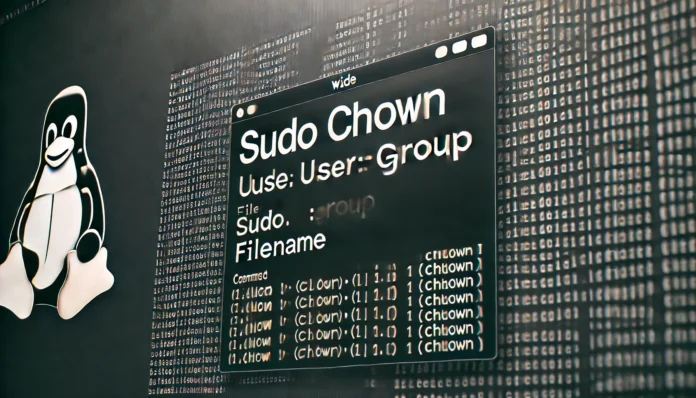Changing file ownership is a fundamental task in Linux system administration. Using the chown command effectively allows you to control who has access to files and directories, crucial for maintaining both security and organization. In this guide, you’ll learn the ins and outs of the chown command, including its syntax, examples, and practical tips to ensure proper file ownership management.
Understanding the chown Command
In Linux, every file and directory has an owner and a group associated with it. The chown (change owner) command allows users to modify these properties, making it indispensable for both single-user environments and complex multi-user systems. Proper usage of chown ensures that sensitive data is accessible only to authorized users, enhancing system security.
Basic Syntax of chown
The chown command follows a straightforward syntax:
chown [OPTIONS] USER[:GROUP] FILE- USER: The username or user ID for the new owner.
- GROUP: (Optional) The group name or group ID to change file group ownership.
- FILE: The target file or directory.
By learning this syntax, you’ll be able to apply ownership changes across your files quickly.
Changing File Ownership
To change the owner of a file, use this command structure:
sudo chown new_user filenameExample:
sudo chown john sample.txtIn this case, sample.txt will now belong to the user john. Using sudo is often necessary because changing file ownership typically requires superuser privileges.
Changing Group Ownership
To change a file’s group ownership, add a colon followed by the new group name:
sudo chown :new_group filenameExample:
sudo chown :developers sample.txtHere, the file sample.txt will be associated with the group developers. This is useful when you want multiple users in the same group to access specific files.
7 Easy Ways to Fix the “Command Not Found” Error in Linux
Recursive Ownership Change
Sometimes, you may need to change ownership for a directory and all files within it. The -R option allows recursive changes:
sudo chown -R new_user:new_group /path/to/directoryExample:
sudo chown -R john:developers /home/john/projectsThis command will change the ownership of all files and subdirectories within /home/john/projects to john and the developers group, streamlining the process of updating ownership for large directories.
Using chown with Symbolic Links
Handling symbolic links with chown requires care, as modifying the link itself doesn’t affect the linked file. Use the -h option to change the owner of the symbolic link, not the target:
sudo chown -h new_user:new_group symlinkThis command updates the symbolic link’s owner rather than the linked file, ensuring accurate control over link ownership without unintended modifications to the target.
5 Easy Ways to Fix “GPG Error: No Public Key” on Ubuntu
Practical Examples
- Change Ownership of a Single File
sudo chown alice document.txtThis assignsdocument.txtownership to the useralice. - Change Both Owner and Group
sudo chown bob:editors project.doc project.docnow belongs to userboband the groupeditors. - Apply Changes Recursively in a Directory
sudo chown -R admin:staff /data/reportsAll files in/data/reportsare now owned byadminand associated with thestaffgroup. - Change Ownership of a Symbolic Link
sudo chown -h alice link_to_fileThis command changes the ownership of the symbolic linklink_to_filetoalice.
Summary
Understanding and effectively using the chown command can enhance the security and organization of your Linux file system. From basic ownership changes to complex recursive adjustments, mastering chown is essential for Linux administrators. With these commands and options, you can control access levels across your files, ensuring that only authorized users and groups can access sensitive data.



